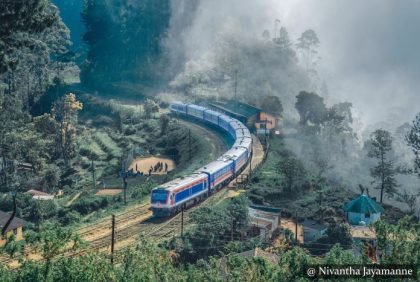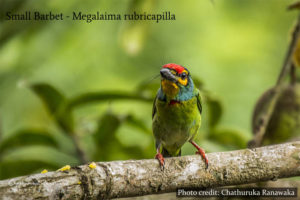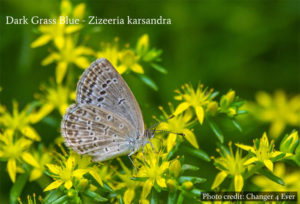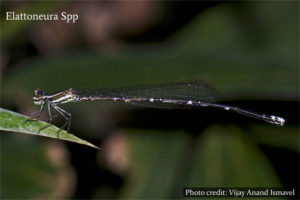






Boating in Muthurajawela: A Serene Escape
If you're staying in Katunayake, Negombo, or Ja-ela, a visit to Muthurajawela Marsh is a must. This tranquil wetland offers the perfect escape for nature lovers, providing a peaceful boating experience amidst stunning landscapes.
Muthurajawela Marsh, one of Sri Lanka’s largest wetlands, spans over 3,000 hectares. Fed by freshwater from the Attanagalu Oya River, the marsh supports a rich biodiversity, including various species of birds, reptiles, and aquatic life. As you drift through the calm waters, you'll be surrounded by lush greenery, creating an ideal environment for birdwatching. Herons, kingfishers, and egrets are commonly spotted in this serene setting.
The freshwater from the Attanagalu Oya River flows through the marsh, enriching the ecosystem and maintaining the delicate balance of the habitat. This unique connection between the river and the marsh ensures a thriving environment for local wildlife.
CCT Sri Lanka takes care of all your transportation needs, boat arrangements, and equipment, ensuring a smooth and hassle-free experience. Whether you're an avid nature enthusiast or simply looking for a relaxing boat ride, this adventure offers a unique insight into Sri Lanka’s natural beauty.
Exploring Muthurajawela Marsh is an unforgettable journey into the heart of Sri Lanka’s wetlands. Don’t miss the chance to experience this serene escape!
Why Choose CCT Sri Lanka?
Registered and Professional Experts: CCT Sri Lanka (Cross Country Travels) is a locally owned, fully registered company with the Sri Lanka Tourism Development Authority and Civil Aviation Authority.
Certified Drivers & Guides: Our licensed, passionate guides are dedicated to providing enriching and awe-inspiring experiences throughout your journey.
Sustainability: Every penny you spend with us directly benefits Sri Lanka—helping ease its debt-stricken economy, empower local communities, and preserve the island's stunning nature.
Book Your Adventure Now: Secure your spot through our safe, easy booking system on this page and get ready to embark on an unforgettable journey.
Boating in Muthurajawela
Best season : Throughout year
Available : Daily
Arranging time needed : 1 hour
Pick up point : BI Airport, Ja-Ela or Negombo area
Best time to start : Early mornings & late afternoons
Last intake : 4 PM
Whole boating time hrs : 1.30
Restrictions : Do not leave plastics behind / Please do not feed wild animals.
Price includes : Pick up & drop off / Boat / Tickets / Guide on board / Local snack / All Gov taxes.
Child price : Aged 6 - 12 is considered a child / Aged 0 - 6 is free of charge.
Feedback us : Our drivers and service providers are advised not to promote any other activities or nudge you for shopping. Please leave your feedback on Google.
Optional : A well-spoken local animal expert / historian could be arranged with an additional fee.
You may bring : Water / Hat and sun glass / Sun cream / Camera
We love holiday planning!
Recent reviews
-
 Sailing Course in Sri Lanka
Rated 4 out of 5by Michiel le Roux
Sailing Course in Sri Lanka
Rated 4 out of 5by Michiel le Roux -
 Colombo Port City Charter Sailing - 3 or 5 hrs - For Sri Lankans
Rated 5 out of 5by Ravichandran thanus
Colombo Port City Charter Sailing - 3 or 5 hrs - For Sri Lankans
Rated 5 out of 5by Ravichandran thanus -
 Reserve Your Seat Kandy Esala Perahera
Rated 5 out of 5by Julien Privey
Reserve Your Seat Kandy Esala Perahera
Rated 5 out of 5by Julien Privey -
 Reserve Your Seat Kandy Esala Perahera
Rated 5 out of 5by Nanfa
Reserve Your Seat Kandy Esala Perahera
Rated 5 out of 5by Nanfa -
 Book Train Tickets Online in Sri Lanka
Rated 5 out of 5by Vedanth Sameer Rao
Book Train Tickets Online in Sri Lanka
Rated 5 out of 5by Vedanth Sameer Rao -
 Whale Watching in Sri Lanka - Shared Luxury Yacht
Rated 5 out of 5by Julie
Whale Watching in Sri Lanka - Shared Luxury Yacht
Rated 5 out of 5by Julie -
 Colombo Port City Charter Sailing - 3 or 5 hrs - For Foreign Guests
Rated 5 out of 5by Sathsarani
Colombo Port City Charter Sailing - 3 or 5 hrs - For Foreign Guests
Rated 5 out of 5by Sathsarani -
 Snorkeling With Whales
Rated 5 out of 5by Arne
Snorkeling With Whales
Rated 5 out of 5by Arne
Muthurajawela Marsh

Negombo Lagoon and the Kelani River. Stretching inland to Ragama and Peliyagoda in the Gampaha District, this vast marsh, together with the Negombo Lagoon, forms a harmonious coastal wetland ecosystem that spans a total of 6,232 hectares. This marsh-lagoon complex is believed to have originated over 5,000 years ago, making it a remarkable and ancient habitat.
A 2002 study by IUCN Sri Lanka revealed that Muthurajawela is home to an impressive array of life. The marsh boasts 192 species of flora, while its vertebrate fauna includes 40 species of fish, 14 species of amphibians, 31 species of reptiles, 102 species of birds, and 22 species of mammals. Among these, 17 species are endemic, and 26 are nationally threatened, highlighting the ecological importance and fragility of this area.
The marsh's main water source is the Dandugan Oya, which drains a catchment area of 727 km² and discharges into the lagoon-marsh interface. A navigational canal, constructed during the Dutch colonial period, runs through the marsh, adding a historical touch to the landscape. Muthurajawela experiences an annual rainfall of 2,000-2,500 mm, with an average temperature of 27°C, making it a rich and vibrant ecosystem.
Historically, Muthurajawela was extensively cultivated for paddy, with records dating back more than 500 years, showcasing the region's deep-rooted connection to agriculture.
For a closer look at the flora and fauna of this fascinating marsh, click here.
Opening time : 7.30 AM - 4 PM
- Early morning trips could be arranged on request
- last boat leaves 4.00 PM
Separate fee structure for locals available
Fish - Muthurajawela Lagoon

Muthurajawela is home to a diverse array of approximately 40 fish species, representing 23 families. This includes about 45% of Sri Lanka's native inland fish species, with five of these species being endemic to the region. Among the fish, five species are classified as nationally threatened, while four are exotic to the area.
The marsh is teeming with common species like the Tilapia (Sarotherodon mossambicus), Pearl Spot (Etroplus suratensis), and the Dwarf Panchax (Aplocheilus parvus), all of which thrive in its waters.
However, some fish species at Muthurajawela are facing significant threats. These include the Filamented Barb (Puntius sinhalaya), Flying Barb (Esomus thermoicos), Day's Killifish (Aplocheilus dayi), Smooth-breasted Snakehead (Channa orientalis), and the Walking Catfish (Clarias brachysoma), all of which are considered nationally threatened and require urgent conservation attention.
Amphibians - Muthurajawela

Muthurajawela is home to 14 species of amphibians, including 4 endemics, representing 4 distinct families. These amphibians, which include toads, narrow-mouthed frogs, aquatic frogs, and tree frogs, add to the rich biodiversity of the marsh. Among the most common species found here are the Common Toad (Bufo melanostictus) and the Six-toed Green Frog (Euphlyctis hexadactyla).
However, some amphibian species at Muthurajawela are nationally threatened. These include the Athokorale's Dwarf Toad (Bufo atukoralei), the Corrugated Water Frog (Limnonectes corrugatus), the Sri Lanka Wood Frog (Rana gracilis), and the Hour-glass Tree Frog (Polypedates cruciger), all of which are at risk and in need of conservation efforts to ensure their survival.
Reptiles - Muthurajawela

Muthurajawela is home to 31 species of reptiles, including 6 endemics, spread across 18 families. These reptiles consist of 15 species of tetrapods and 16 species of serpents. Among them, 9 species are nationally threatened. Some of the most common reptiles in the area include the Water Monitor (Varanus salvator), Common Garden Lizard (Calotes versicolor), and two species of geckos, Hemidactylus frenatus and Gehyra mutilata.
One of the more intriguing reptile species found in Muthurajawela is the Star Tortoise (Geochelone elegans), which is typically found only in Sri Lanka's lowland dry and intermediate zones. Additionally, the sanctuary is home to a breeding population of the Estuarine Crocodile (Crocodylus porosus), the largest reptile in the marsh, which resides in the northern region.
Among the nationally threatened reptiles at Muthurajawela are the Estuarine Crocodile (Crocodylus porosus), Flapshell Turtle (Lissemys punctata), Parker's Black Turtle (Melanochelys trijuga), Star Tortoise (Geochelone elegans), Indian Python (Python molurus), and Wart Snake (Achrochordus granulatus).
Also found here are species such as the Sri Lanka Kangaroo Lizard (Otocryptis wiegmanni), Common Pond Snake (Xenochrophis asperrimus), and Dumeril’s Kukri Snake (Oligodon sublineatus), all of which are nationally threatened. Endangered species in the area include the Spotted House Gecko (Hemidactylus brookii), Common Lanka Skink (Lankascincus fallax), and the Common Skink (Mabuya carinata).
The rich variety of reptiles at Muthurajawela highlights the ecological significance of this wetland and the urgent need for conservation efforts to protect these vulnerable species.
Birds - Muthurajawela

Birds are the dominant vertebrate group at Muthurajawela, with a remarkable 102 species (including 1 endemic) across 42 families. Of these, 19 are winter migrants, and 3 species are nationally threatened.
Nearly half of the bird species found here are associated with wetland ecosystems, including herons, egrets, cormorants, teals, waders, kingfishers, and terns, all of which feed on aquatic organisms. The northern and central parts of the Muthurajawela Sanctuary serve as crucial breeding grounds for native birds. Additionally, this area, along with the nearby Negombo Lagoon, provides an essential feeding and resting habitat for winter migrants.
Among the endangered birds at Muthurajawela is the Small Barbet (Megalaima rubricapilla), while the nationally threatened species include the Alpine Swift (Tachymarptis melba), Greater Painted-Snipe (Rostratula benghalensis), and Ruddy-breasted Crake (Porzana fusca).
Muthurajawela’s birdlife is a testament to the sanctuary’s ecological richness and its vital role in supporting both resident and migratory species.
The Mammals - Muthurajawela

Muthurajawela is home to 22 mammal species, including 1 endemic species. Among the most notable is the Slender Loris (Loris tardigradus), an extremely rare primate found in the marsh. This species is globally threatened and holds significant conservation value. Additionally, the marsh serves as a crucial refuge for the carnivorous Fishing Cat (Prionailurus viverrinus), which thrives in the wetland's diverse ecosystem.
Another endangered mammal species at Muthurajawela is the Toque Macaque (Macaca sinica), which also faces threats to its population. The presence of these rare and endangered mammals highlights the importance of Muthurajawela as a sanctuary for preserving Sri Lanka’s unique wildlife.
Butterflies - Muthurajawela

Muthurajawela is home to 48 butterfly species, none of which are endemic, but 6 of them are nationally threatened. Among the most common species are the Blue Glassy Tiger (Ideopsis similis), Glassy Tiger (Parantica aglea), and the Tailed Jay (Graphium agamemnon), which are frequently spotted in the marsh.
The nationally threatened butterfly species found at Muthurajawela include the Large Oak Blue (Arhopala amantes), Dark Grass Blue (Zizeeria karsandra), Tiny Grass Blue (Zizula hylax), Striped Albatross (Appias libythea), Large Branded Swift (Pelopidas thrax), and the Dark Palm Dart (Telicota ancilla). These species, though rare, contribute to the diverse and delicate ecosystem of Muthurajawela, emphasizing the marsh’s significance as a critical habitat for both common and threatened butterflies.
Dragonflies and damselflies - Muthurajawela

Muthurajawela is home to 22 species of odonates, including one endemic species and two that are nationally threatened. Among the most abundant species are the dragonfly Rhyothemis variegata and the damselfly Agriocnemis pygmaea, which are frequently observed in the marsh.
The nationally threatened dragonfly species found at Muthurajawela is Neurothemis intermedia, while Elattoneura spp. is both nationally threatened and endemic to the region. These species highlight the marsh's ecological importance and the need for continued conservation efforts to protect these delicate insect populations.
Negombo Lagoon
 The northern part of Muthurajawela is home to the Negombo Lagoon, one of the most productive estuaries in Sri Lanka. Stretching 12 km in length from south to north, the lagoon reaches a width of 3.75 km at its broadest point. With a mean depth of 1.2 meters, the lagoon has a maximum recorded water depth of 2.6 meters. Interestingly, 10% of the lagoon's area has water depths of less than 0.5 meters. Covering an approximate area of 32 km², the lagoon opens to the sea at its northern end, while to the south, it is connected to the Muthurajawela marsh, which spans roughly 31 km². Together, the lagoon and marsh form a vast, interconnected coastal wetland system that is influenced by tidal movements.
The northern part of Muthurajawela is home to the Negombo Lagoon, one of the most productive estuaries in Sri Lanka. Stretching 12 km in length from south to north, the lagoon reaches a width of 3.75 km at its broadest point. With a mean depth of 1.2 meters, the lagoon has a maximum recorded water depth of 2.6 meters. Interestingly, 10% of the lagoon's area has water depths of less than 0.5 meters. Covering an approximate area of 32 km², the lagoon opens to the sea at its northern end, while to the south, it is connected to the Muthurajawela marsh, which spans roughly 31 km². Together, the lagoon and marsh form a vast, interconnected coastal wetland system that is influenced by tidal movements.
The lagoon features a canal segment with thirteen islands, the largest of which is Munnakarai. Four of these islands are inhabited, while the remaining are densely covered in mangroves. The islands include Munnakarai, Siriwardena Pedesa, Wedi Kanda, Maha Moliya, Kakaduwa, Katukarai, Wilisiyanduwa, Kadolgas Nella, Kuda Moliya, Kakaduwa (2), Pittipana Duwa (1), Pittipana Duwa (2), and Kuttiduwa. Surrounding the lagoon are fringe mangroves and mangrove-associated plants. The shallow areas of the lagoon are covered with sea grasses and mud, while the bottom of the lagoon mouth is sandy, contributing to the area's diverse and thriving ecosystem.
Zooplankton - Negombo Lagoon
The abundance of zooplankton in Negombo Lagoon varies between 48 to 198 individuals per liter, with an average wet biomass of 0.5 g per cubic meter. Copepods are the most dominant zooplankton group, comprising 40% of the lagoon's zooplankton community. Of this, copepod larvae (nauplii) account for 34%, with 87% of them being calanoid copepods. The genus Microcalanus is the most prevalent calanoid taxa, contributing 13% to the overall zooplankton community in the lagoon.
When examining zooplankton abundance in the inlet canals to the lagoon, the highest abundance was recorded in the Hamilton Canal, with 145 individuals per liter, while the lowest abundance was observed in the Dandugan Oya. Copepods dominate the estuarine plankton of the lagoon, playing a crucial role in secondary production within the estuarine ecosystem. This process forms an essential part of the food web, supporting a variety of higher trophic levels in the region.
Benthic organisms - Negombo Lagoon
Negombo Lagoon is home to a diverse range of benthic invertebrates, with a total of 89 species recorded, belonging to 58 families. These species include 36 polychaetes, 13 crustaceans, 24 gastropods, and 16 bivalves (Dahanayaka et al., 2008). The invertebrate species found in the lagoon are primarily annelids, arthropods, and mollusks, specifically polychaetes, crustaceans, gastropods, and bivalves. These species thrive in the lagoon's bottom sediments, contributing to the richness and ecological complexity of the benthic ecosystem.
Shrimp - Negombo Lagoon
Samarakoon and Raphael (1972) conducted a survey to assess seed availability in Negombo Lagoon and discovered that the post-larvae and juveniles of Penaeus indicus, P. semisulcatus, Metapenaeus dobsoni, and M. elegans were present in sufficiently large numbers between September and November. However, P. monodon and P. latisulcatus were recorded in smaller numbers, appearing only for a short period. This study highlights the seasonal variability in the abundance of different species in the lagoon.
Crabs - Negombo Lagoon

In the mangrove areas and mud flats of Negombo Lagoon, grapsid and ocypodid crabs are notably abundant. The most dominant grapsid crab species in the lagoon are C. indiarum and C. darwinensis. The first records of Metopograpsus thukuhar and Sesarma guttatum in Sri Lanka were made in the mangroves of the lagoon (Priyadarshani et al., 2008).
Xanthid crabs, particularly Baruna socialis and Pseidognathus dearira, have been observed in association with oysters within the lagoon (Pinto and Wignarajah, 1980). The mud lobster, Thalassina anomala, is found living within the mangrove stands. Other crab species inhabiting the estuarine environment include hermit crabs of the genus Eupagurus and Paqurus, as well as fiddler crabs (Uca sp.). These crabs contribute significantly to the diverse and dynamic ecosystem of the Negombo Lagoon.





Reviews
There are no reviews yet.